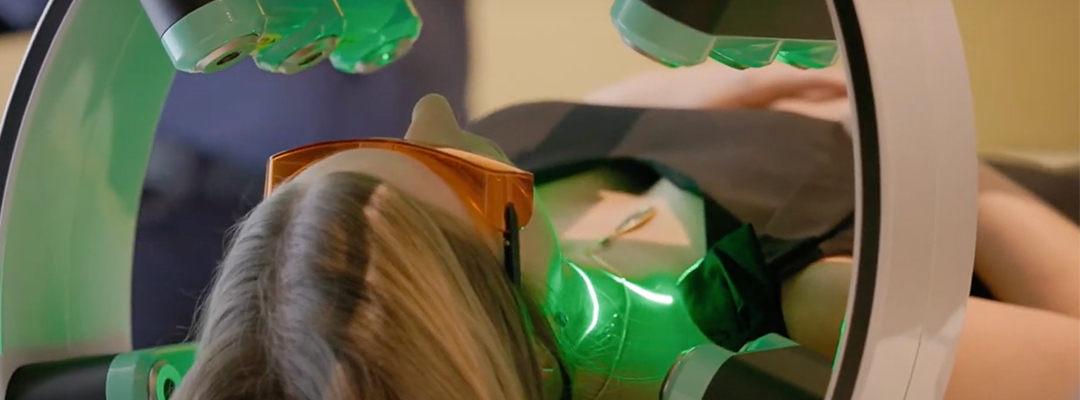
Medications are often the go-to solution for weight loss when diet and exercise fall short, but they are not without their downsides. While convenient and widely available, weight loss medications often bring a host of side effects that can outweigh their benefits. Enter fat loss lasers – a revolutionary fat loss solution that is quickly gaining traction for its safety, effectiveness, and lasting results.
Fat loss lasers are a safe, non-invasive alternative to traditional medications and are shown to produce long-term results in comparison. However, some patients are hesitant to try newer weight loss solutions such as laser fat loss because of cost, availability, and uncertainty about whether treatment will work. By understanding how fat loss lasers work and why they are becoming a preferred option, patients can make more informed decisions about achieving their weight loss goals.
Educating patients about the benefits of fat loss lasers and how they work can ultimately lead to greater health outcomes and a higher number of satisfied patients – especially when they can finally achieve their weight loss goals. Laser fat loss is surging in popularity – here’s a closer look at its benefits.
What are Fat Loss Lasers?
Fat loss lasers are a type of low-level laser therapy (LLLT) for weight loss. With this treatment, light energy is delivered to the skin at a non-thermal level without burning or damaging tissues and other structures. This light energy creates tiny pores in fat cells, which allows for fatty liquids called lipids to leak out. The fat cells shrink, and the lipids are naturally flushed from the body via the lymphatic system to facilitate weight loss.
Laser fat loss may be used to target areas of stubborn fat or to reduce overall body circumference. LLLT can also be customized for each patient to help them achieve personal, desired results.

What are the Benefits of Fat Loss Lasers?
Weight loss, an enhanced body contour, and an improvement in comorbid conditions linked to obesity and excess weight are just a few of a long list of benefits of laser fat loss. Other benefits of laser fat loss include:
- Non-invasive: LLLT for weight loss involves no incisions and no needles or syringes. During this procedure, low-light energy is directed at areas with stubborn fat through a wand that is passed over the skin.
- No downtime: Fat loss lasers require no sedation, anesthesia, or incisions and therefore produce no downtime. Patients can resume their usual activities immediately following their treatment sessions.
- No bruising or swelling: Laser fat loss produces no major bruising, swelling, or discomfort like many other weight loss solutions.
- Reduction in stubborn fat: LLLT is effective at reducing pockets of stubborn fat that won’t respond to other weight loss solutions such as nutrition, diet, and exercise.
- Precise targeting: Specific pockets of fat can be carefully targeted with laser fat loss to improve the silhouette.
- Convenience: Laser fat loss sessions are relatively short, which makes this option convenient for those with busy lifestyles.
- Fast results: Results from laser fat loss are often noticeable within two weeks.
In a study in Obesity Surgery, patients who underwent laser fat loss for 30 minutes twice a week for four weeks experienced a cumulative loss in girth of 2.15 cm. A newer study in Lasers in Medical Science showed that patients who underwent laser fat loss twice a week for six weeks experienced the greatest reductions in weight, waist circumference, body mass index, and body fat mass compared to those who went less frequently. They also experienced greater improvements in body satisfaction, body appreciation, and quality of life.
Why Choose Laser Fat Loss Over Medications?
When guiding patients in their weight loss journey, healthcare providers often face the challenge of balancing efficacy with safety and patient comfort. Laser fat loss can be a promising choice for those seeking a safer, more effective alternative to weight loss medications. Here’s a deeper dive into why laser fat loss stands out:
Fewer Risky Side Effects
Weight loss medications, though effective for some, often come with a laundry list of potential side effects. Patients might experience nausea, diarrhea, or fatigue, which can disrupt daily life. More concerning, some medications carry risks of severe side effects such as hypertension, heart palpitations, or psychological changes like depression. Even with careful screening, it’s impossible to predict how an individual might react to these drugs.
In contrast, laser fat loss treatments are non-invasive and largely free of such risks. By targeting fat cells directly and sparing surrounding tissues, LLLT minimizes the likelihood of complications. This safety profile not only enhances patient trust but also simplifies aftercare, making it a preferred option for many providers and patients.
Longer-Lasting Results
One common frustration with weight loss medications is their dependency on continuous usage to maintain results. It is also possible to develop a tolerance to medications, which makes them less effective over time. Patients may also face weight regain once they stop the medication. This cyclical nature can lead to discouragement and additional health concerns.
Laser fat loss treatments, on the other hand, offer tangible, lasting results with far fewer sessions. By directly disrupting fat cells, LLLT provides patients with a visible reduction in problem areas. For patients who pair the treatment with healthy lifestyle changes, these results can be maintained long-term, offering a sustainable solution that doesn’t rely on medication adherence.
Customizable and Targeted Results
Unlike medications that affect the body systemically, laser fat loss treatments allow for targeted precision. Patients often have specific areas they wish to address, such as love handles, thighs, or underarm fat. LLLT enables providers to tailor treatments to these areas, ensuring a more personalized approach.
This precision not only enhances the aesthetic outcomes, but also improves patient satisfaction. Customizable treatment plans allow healthcare providers to address individual concerns effectively, creating a collaborative and rewarding patient experience.
No Downtime or Illness
For many patients, the thought of taking weight loss medications or undergoing surgery can evoke anxiety. Concerns about ingesting chemicals or undergoing invasive procedures often lead to hesitation. Many weight loss medications can cause fatigue, digestive upset, or feelings of unwellness, while invasive procedures like liposuction or bariatric surgery require extended recovery periods.
Laser fat loss helps eliminate these concerns. The non-invasive nature of laser fat loss is a game-changer for patients looking to avoid the physical toll often associated with fat loss interventions. Patients can resume their normal activities immediately after a session – no need to take time off work or adjust their routines. For busy individuals, this convenience is a major deciding factor when choosing between treatment options.

How to Talk to Patients About Fat Loss Lasers
Patients who have struggled with losing excess weight are often receptive to learning about new treatments that can help them quickly meet their goals. The key to encouraging patients to choose fat loss lasers over medication is providing them with the facts and data about the benefits of LLLT and how it works to achieve weight loss. Healthcare professionals can try these strategies when talking to patients about laser fat loss:
- Share before-and-after photos of patients who have lost weight with LLLT.
- Share a list of known side effects produced by commonly prescribed weight loss medications.
- Explain how the technology behind fat loss lasers works to trigger weight loss.
- Emphasize how laser fat loss produces no downtime or recovery.
- Explain how results are long-lasting and quickly noticeable.
- Compare the cost of laser fat loss treatment with that of long-term or lifelong medication use.
- Discuss possible long-term side effects of medication use, such as high blood pressure and unpleasant gastrointestinal issues.
Helping Patients Pick the Best Fat Loss Option
While medications may have their place in weight loss treatment, fat loss lasers stand out as a safer, more effective alternative for many patients. With no downtime, fewer side effects, and the ability to produce long-term results, LLLT is transforming the weight loss landscape. By educating patients about this innovative technology and supporting them in making informed decisions, healthcare providers can help more individuals achieve their fat loss goals while improving their overall health and satisfaction.
It’s important to know there is no one-size-fits-all solution that works for everyone when considering weight loss. However, when comparing the pros and cons of fat loss lasers and medications, there’s no doubt that laser fat loss comes out on top as the safer and more effective option.



